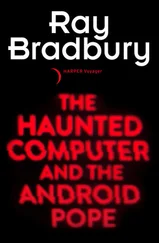A man named Les Solomon, who was the technical editor of Popular Electronics magazine, heard about Roberts’s devices and convinced MITS to provide the original working model for a cover article on the first affordable computer kit. In January 1975. the article appeared. The mail-order kits sold for $397, and Roberts was hoping for a few dozen orders so that he could keep the business going. The first day he checked his mail after the article appeared, he found more orders than he had hoped for in a year.
Nobody could have predicted how many people were eager to spend $400 on a computer kit. Roberts was swamped. Within a few weeks, MITS’ bank balance went from nearly half a million dollars in the red to a quarter of a million in the black. But his small company couldn’t ship the kits fast enough to satisfy some of Roberts’s most fanatical early customers. Some of them actually went to Albuquerque, prepared to camp out on his doorstep until their Altair was ready!
The origin of the name Altair is also a microcomputer legend. According to Roberts and Solomon, they were speculating on the phone about possible names for the kit before the article appeared. Solomon asked his daughter, who was watching “Star Trek” at the time, what Roberts ought to call the device. She replied that in that evening’s episode the starship Enterprise was heading for a star called Altair. So Roberts put the world Altair on the cover of the machine, in those hard-to-read “computer letters” that were considered “futuristic” in the 1970s.
Still, programming an Altair was an almost inconceivable tedious business at first. Nowadays, people program by using their keyboards and video screens to write the symbols for a program in what is known as a “high-level language” (for example, BASIC). After they write their program, they enter it into the computer, and then another program known as a compiler or interpreter translates the high-level program to the kind of language—the patterns of on-and-off impulses— that the machine understands. Back in 1975, an Altair owner had to create even the simplest program by laboriously turning switches on and off by hand.
The lack of a high-level language was a big handicap, but there were other problems with the Altair besides that. You can’t run complicated software unless the hardware has a certain information-handling capacity. The memory of the earliest model was infinitesmal. The first Altair held 256 bytes of information—approximately 2000 on or off impulses. By contrast, most home computers today have 256 kilo bytes of information—a memory that is a thousand times as large as the Altair’s. There was no way to feed information to the processor other than by setting the switches, one a time, by hand—and if you made a mistake you had to start from the beginning.
A volunteer army of garage tinkerers set out to solve these problems by creating software, memory expansion devices, and input-output devices. From all accounts, and from the many innovations that came forth from the homebrew reign, it was an open, enthusiastic, brilliant, intense, esoteric, fun, and exuberant effort—the finest days of the hacker tradition.
Although all the homebrewers of the mid-1970s started out as orthodox members of the Altair cult, they quickly developed their own patriarchs, their own legends, their own shrines. The homebrew mythology started shortly after the birth of the Altair and centered on northern California, rather than New Mexico. The Apple empire, the ill-fated but revolutionary Osborne Computer Corporation, and almost all of the earliest microcomputer-related companies trace their origins back to an anarchistic, ragtag group of computer zealots, the Homebrew Computer Club, who started meeting in the auditorium of Stanford University’s Linear Accelerator building in the spring of 1975.
Lee Felsenstein, a veteran of the Free Speech Movement, a former reporter for The Berkeley Barb, a lifelong electronics freak, and the “anarche” who presided over the early Homebrew Computer Club meetings, later became famous, if not rich, by designing the Osborne I—the first “portable” personal computer. Steve Wozniak, barely out of high school, was another homebrewer whose attempts to outdo the Altair led to a company that grew from a garage to a billion-dollar operation in a few swift years. Dozens of other members of the Homebrew Computer Club started their own companies in the post-Altair, pre-Apple era—with varying degrees of success.
Important as they might have been to the personal computer revolution, the entrepreneurial success and engineering brilliance of the homebrewers is not as directly relevant to our story as is the history of two other Altair enthusiasts who launched the microcomputer software industry. These two homebrewers-turned-industrialists were teenagers at the time, as were many of the early Altair fans. They were far from inexperienced in either the computer world or the business arena, however, and their creations marked the transition of microcomputer programming from a freewheeling amateur affair to a full-fledged business enterprise.
Paul Allen and Bill Gates were their names, and when the Altair came along they were already professional programmers. In the 1960s, when they first met at Seattle’s exclusive Lakeside School and began their long, profitable partnership, Paul Allen was fifteen and Bill Gates was thirteen. They rode bicycles to work years before they owned a company car. Despite their youth, their ability to find the flaws in adult-sized minicomputer programs got them their first job.
A company in Seattle had just received a new minicomputer from Digital Equipment Corporation (known as DEC). The Seattle firm, a company called the Computer Center Corporation (known to the young hackers as “C cubed”), made a deal with DEC: As long as C cubed could uncover bugs in the new computer’s system software, it wouldn’t have to start paying for its use of the computer. This was a mutually profitable arrangement, since both the inventor and the user of the computer had a practical need to track down and eliminate all the programming errors that could cause the system to “crash”and stop working. Gates and Allen were therefore employed by C cubed, which offered them an equivalent deal: These exceptionally bright kids would be allowed to play with the computer, free of charge, for as long as they could come up with new bugs. They did their job so well that they were soon earning real pay.
After several months, DEC, fearing that these hot young bug hunters might find flaws in the system indefinitely, backed down on its original arrangement with C cubed and demanded payment for use of the computer. Meanwhile, Gates had grown so adept at the black art of computer crashing that he had learned to defeat the security procedures of several well-known computer systems. Crashing systems was something of an accomplishment back then, since it proved that one could out-think the people who had designed the system security. The practice had not yet earned the notoriety it found fifteen years later, when the movie WarGames brought the stereotype of the mischievous hacker to public awareness.
By 1971, when Bill Gates had finished his sophomore year of high school and Paul Allen had graduated, their reputation as bug hunters had spread. They were soon hired by a major company, TRW, which was in need of troubleshooters who knew how to find software flaws in exactly the same kind of DEC system that Allen and Gates knew so well. TRW had been contracted to develop the complex and critically important computer system that would control the electrical power generated by the Bonneville dam on the Columbia River. The reliability standards for such a system were, understandably, extremely high. The young troubleshooters ended up making a significant contribution to the project.
Читать дальше










